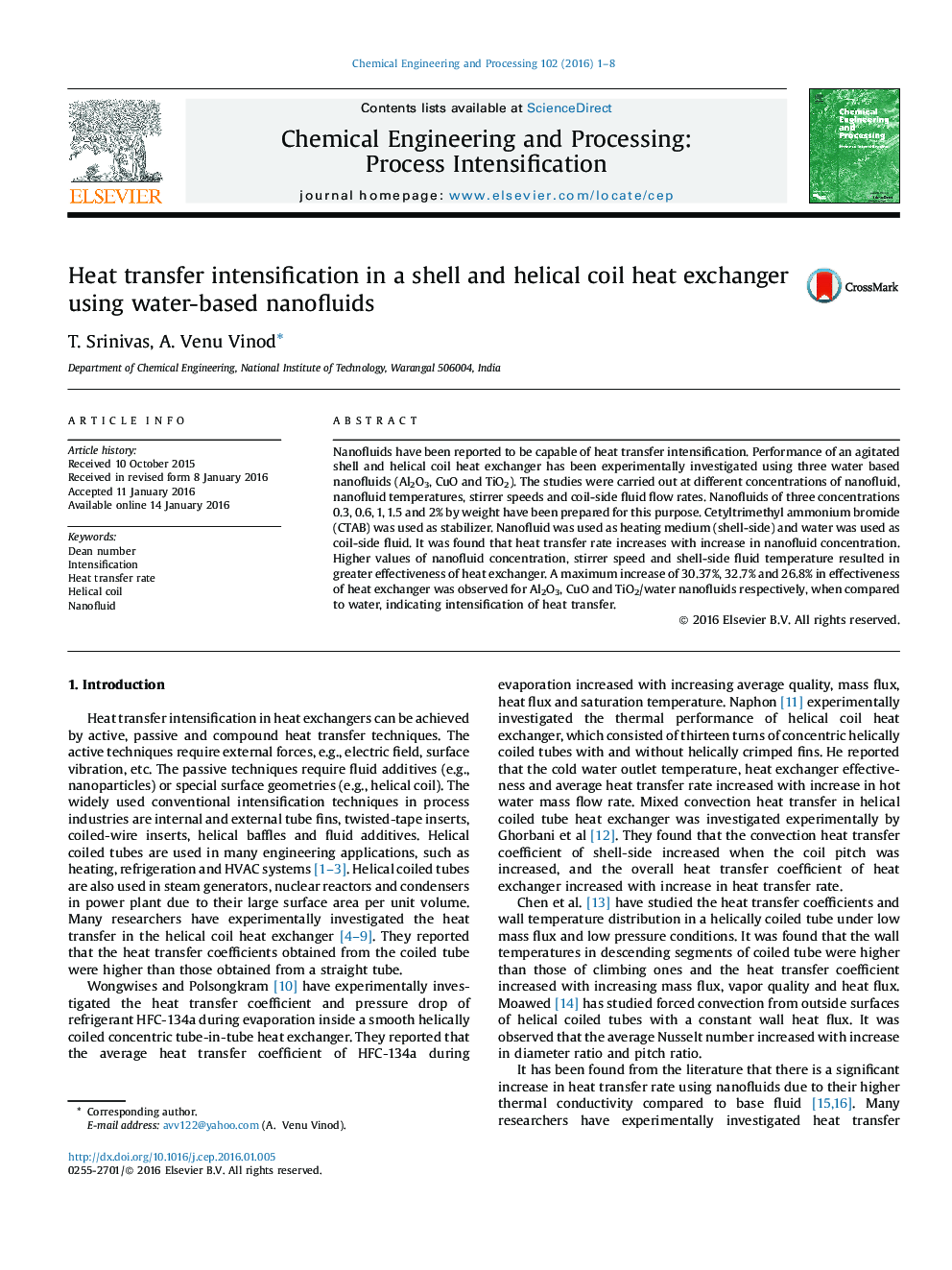| Article ID | Journal | Published Year | Pages | File Type |
|---|---|---|---|---|
| 687895 | Chemical Engineering and Processing: Process Intensification | 2016 | 8 Pages |
•Intensification of heat transfer due to use of nanofluids has been investigated.•Heat transfer rate increases with increase in concentration of nanofluid.•Heat exchanger effectiveness was improved by addition of nanoparticles to water.•Maximum effectiveness was obtained for CuO/water nanofluid.
Nanofluids have been reported to be capable of heat transfer intensification. Performance of an agitated shell and helical coil heat exchanger has been experimentally investigated using three water based nanofluids (Al2O3, CuO and TiO2). The studies were carried out at different concentrations of nanofluid, nanofluid temperatures, stirrer speeds and coil-side fluid flow rates. Nanofluids of three concentrations 0.3, 0.6, 1, 1.5 and 2% by weight have been prepared for this purpose. Cetyltrimethyl ammonium bromide (CTAB) was used as stabilizer. Nanofluid was used as heating medium (shell-side) and water was used as coil-side fluid. It was found that heat transfer rate increases with increase in nanofluid concentration. Higher values of nanofluid concentration, stirrer speed and shell-side fluid temperature resulted in greater effectiveness of heat exchanger. A maximum increase of 30.37%, 32.7% and 26.8% in effectiveness of heat exchanger was observed for Al2O3, CuO and TiO2/water nanofluids respectively, when compared to water, indicating intensification of heat transfer.
